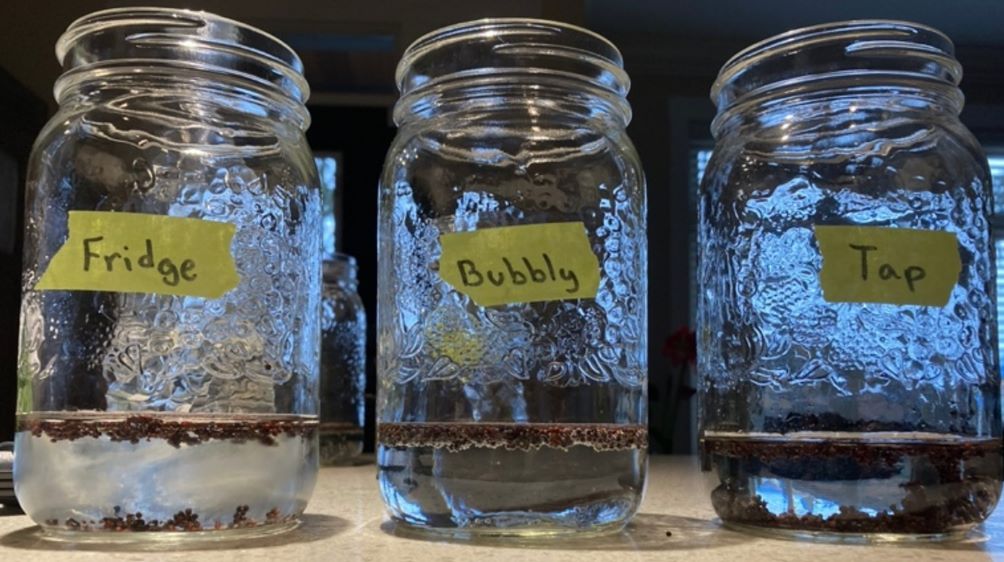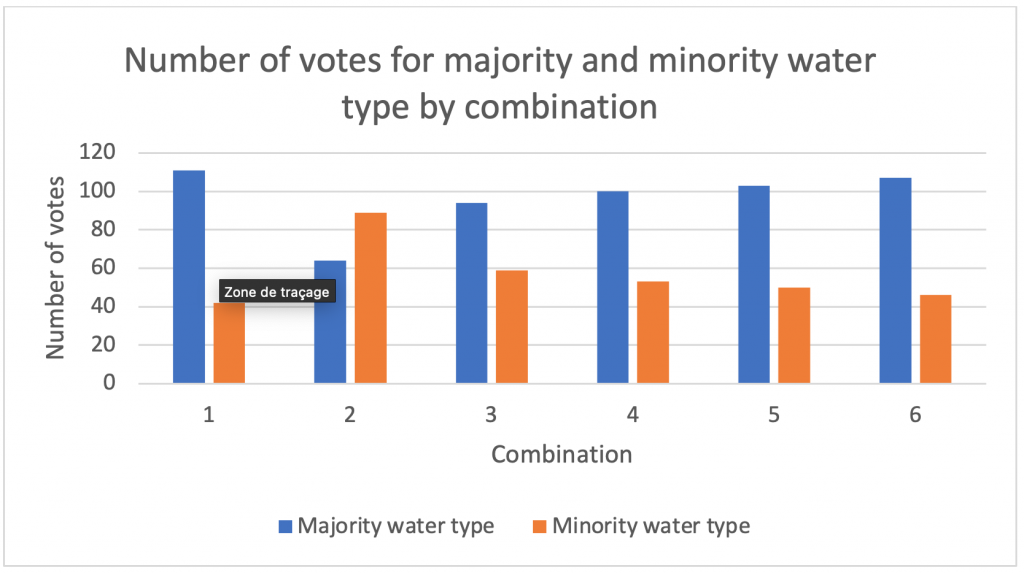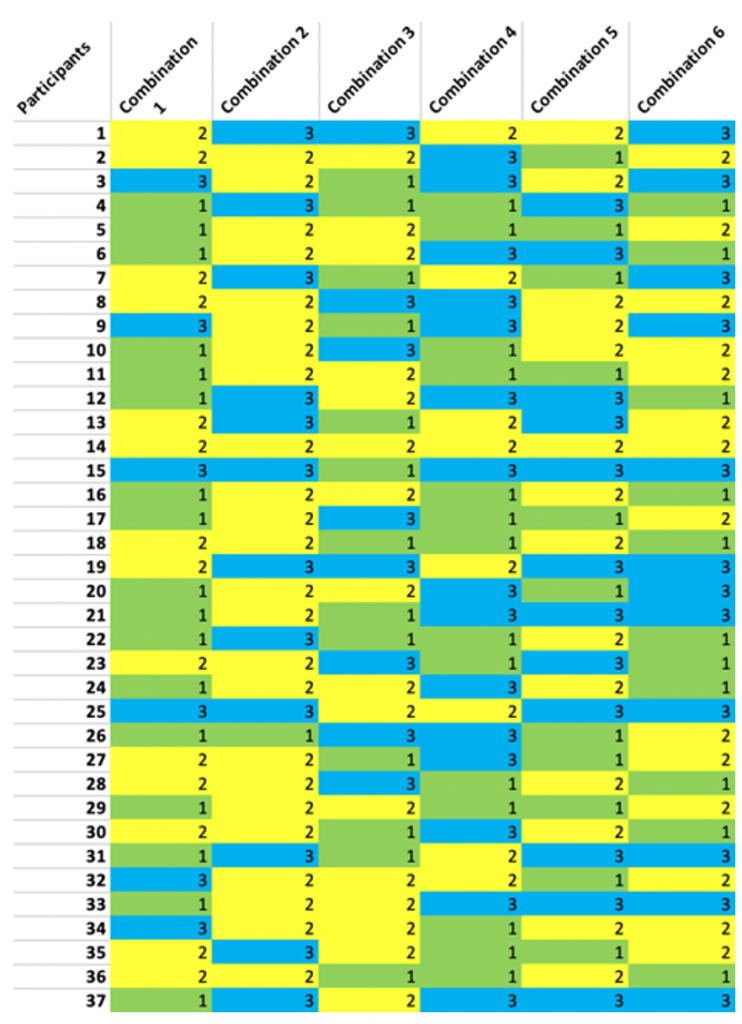Arianne Gionet, Life Science
Abstract
This research paper explores the impact of different types of water used in the growing process of broccoli sprouts on their flavour. While previous studies have investigated the effects of water on the bioactive compounds, microbiological, and physiochemical characteristics of sprouts, none have focused on how water affects the taste. This study uses a taste-testing experiment to investigate the specific effects of different types of water, including tap water, carbonated water, and alkaline remineralized water, on the flavour of broccoli sprouts. The results suggest that the type of water used to grow the sprouts may not have a significant impact on their taste. However, an interesting trend was observed in one combination of water, indicating the potential for further research. Overall, this study contributes to the body of knowledge in the field of food science by providing insight into how the growing process can be optimized to produce sprouts using water that is less appealing in situations where the flavour has a more significant impact.
Introduction
The flavour of food is a complex and multi-faceted topic that is affected by various factors, including the water used in the growing process (Sheibani and Mohammadi). Broccoli sprouts are a popular and nutritious food item that is often used in salads and sandwiches. However, the taste of these sprouts can be influenced by the type of water used in their cultivation. This research paper aims to explore the effect of the type of water used in the growing process of broccoli sprouts on their flavour.
Food science is a broad field that encompasses several sub-topics, from production to processing and packaging, as well as the chemical and physical properties of food. Previous research has shown that the water used to cook or grow food can have a significant impact on its flavour. For example, Zhao et al. (2021) found that the type of water used in cooking mutton soup affected its flavour, highlighting the potential impact of water on taste.
While previous research has explored the impact of water on the flavour of various foods, there is limited research on the specific effects of water on broccoli sprouts. Li et al. (2018) studied the effects of slightly acidic electrolyzed water on the bioactive compounds and morphology of broccoli sprouts, while Puligundla et al. (2018) investigated the effects of electrolyzed water on the microbiological and physiochemical characteristics of broccoli sprouts. However, neither of these studies focused on how the water used to grow sprouts would affect their taste.
Therefore, this research paper aims to contribute to the body of knowledge by investigating the specific effects of water on the flavour of broccoli sprouts. By exploring the impact of different types of water on the taste of these sprouts, this research hopes to provide insight into how the growing process can be optimized to produce sprouts with the best flavour.
This experiment suggests that, in certain circumstances, the type of water used to grow broccoli sprouts could influence their flavour. This could be of interest to producers, retailers, and consumers who are looking to improve the quality and taste of food products.
Materials and methods
2 tbsp of broccoli seeds (mumms) were added to 6 wide mouth Mason jars. The bean screen sprouting lids (masontops) were screwed on and 2 cups of water were poured into each jar. Two jars were filled with tap water (City of Vancouver, BC, Canada), two had carbonated water (SodaStream), and two had alkaline remineralised water (santevia). The jars were left to rest for 10 minutes and were then drained, as shown in Figure 1. After draining, the seeds were covered with their corresponding water and soaked for 8 hours. The Mason jars were positioned upright with Bean Screen on and away from direct sunlight.

Figure 1. Sprouts soaking in water.
After soaking, the water was drained, and the jars were filled with 2 cups of water and drained again. The jars were then positioned upside down on a plate. Every 12 hours, the seeds were rinsed and thoroughly drained. Care was taken to ensure that the seeds never dried out completely. If the seeds started to dry out, they were rinsed every 6 hours or moved to a more humid environment.
Once the seeds had sprouted, they were placed in a bowl with cool water to separate unsprouted seeds and hulls. They were then given a final rinse and laid on a clean surface to dry for 2 hours.
The seeds were then grouped into combinations of 3, with two of one type of water making up the majority, and one of a second type of water making up the minority. The participants were then asked to taste the sprouts one combination at a time and identify the minority water type. This was continued for each of the 6 combinations.
The combinations were as follows.
Combination 1: Majority carbonated water, minority tap water.
Combination 2: Majority carbonated water, minority re-mineralized water.
Combination 3: Majority re-mineralized water, minority tap water.
Combination 4: Majority tap water, minority carbonated water.
Combination 5: Majority re-mineralized water, minority carbonated water.
Combination 6: Majority tap water, minority re-mineralized water.
The raw data collected from the taste testing experiment was initially classified based on the combination used in the testing with the participants. To make the data more readable and clearer, color coding was added, as shown in Figure 3, in the annex. The numbers 1, 2 and 3 represent the number of the container that the sprouts were placed in. After the initial classification, the data was separated into two categories: the majority water type and the minority water type, as shown in Figure 2. The majority water type made up two thirds of each combination, while the minority water type made up the remaining one third. The data was organized in this manner to make it easier to analyze the participants’ ability to distinguish the minority water type in each combination. Overall, this data organization approach allowed for a clearer understanding of the participants’ ability to differentiate between types of water used to grow broccoli sprouts.
Results
As seen in Figure 2, for all but group two participants voted for the majority water type and on average there was an over 30 vote difference between the majority water type and the minority water type.

Figure 2. Compilation of all raw data classed by majority and minority water types. Combination 1: Majority carbonated water, minority tap water. Combination 2: Majority carbonated water, minority re-mineralized water. Combination 3: Majority re-mineralized water, minority tap water. Combination 4: Majority tap water, minority carbonated water. Combination 5: Majority re-mineralized water, minority carbonated water. Combination 6: Majority tap water, minority re-mineralized water.
Discussion
The study investigated the impact of tap water, carbonated water, and alkaline remineralized water on the taste of broccoli sprouts using a taste-testing experiment. The results indicate that the type of water used may not have a significant impact on their taste, but there is a potential for further research. The study provides insight into how the growing process can be optimized to produce sprouts using water that is less appealing, making it useful for producers, retailers, and consumers. However, the study has limitations, such as the small sample size and limited types of water tested, and the results cannot be generalized to all types of broccoli sprouts. Further research is needed to investigate the impact of water on the taste of broccoli sprouts comprehensively.
In combination 2, which had remineralized water as the minority water type and carbonated water as the majority, a higher number of participants voted for the minority water type. This suggests that, in certain circumstances, the type of water used to grow broccoli sprouts could have an effect on their flavour. In this case, the remineralized water may have imparted a distinct taste to the sprouts that was noticeable even in the presence of a majority of carbonated water.
It is worth noting that the experiment has some limitations. First, the sample size was relatively small, which may limit the generalizability of the findings. Future studies with larger sample sizes could provide more robust results. Additionally, the study only examined three types of water, and there may be other factors related to water quality or other environmental factors that could impact the taste of broccoli sprouts. Future studies could examine a wider range of water types or other environmental variables to better understand their impact on the flavour of sprouts. It is also worth noting that the carbonated water was made using tap water which means that they had more similarities in terms of flavour than with the remineralized water.
In conclusion, the experiment found that the majority of participants voted for the majority water type in each combination of water used to grow broccoli sprouts and were unable to find the outlier. However, the results from combination 2 suggest that depending on the circumstances, the type of water used to grow sprouts could have an effect on their flavour.
Annex

Figure 3. Example of raw data.
References
Puligundla, Pradeep, et al. “Broccoli Sprout Washing With Electrolyzed Water: Effects on Microbiological and Physicochemical Characteristics.” LWT, vol. 92, Elsevier BV, June 2018, pp. 600–06. https://doi.org/10.1016/j.lwt.2017.09.044.
Sheibani, Ershad, and Abdorreza Mohammadi. “The Impacts of Water Compositions on Sensory Properties of Foods and Beverages Cannot Be Underestimated.” Food Research International, vol. 108, Elsevier BV, June 2018, pp. 101–10. https://doi.org/10.1016/j.foodres.2018.03.024.
Li, Lizhen, et al. “Effect of Slightly Acidic Electrolyzed Water on Bioactive Compounds and Morphology of Broccoli Sprouts.” Food Research International, vol. 105, Elsevier BV, Mar. 2018, pp. 102–09.
Zhao, Bing, et al. “Effect of Different Cooking Water on Flavor Characteristics of Mutton Soup.” Food Science &Amp; Nutrition, vol. 9, no. 11, Wiley, Sept. 2021, pp. 6047–59. https://doi.org/10.1002/fsn3.2546.